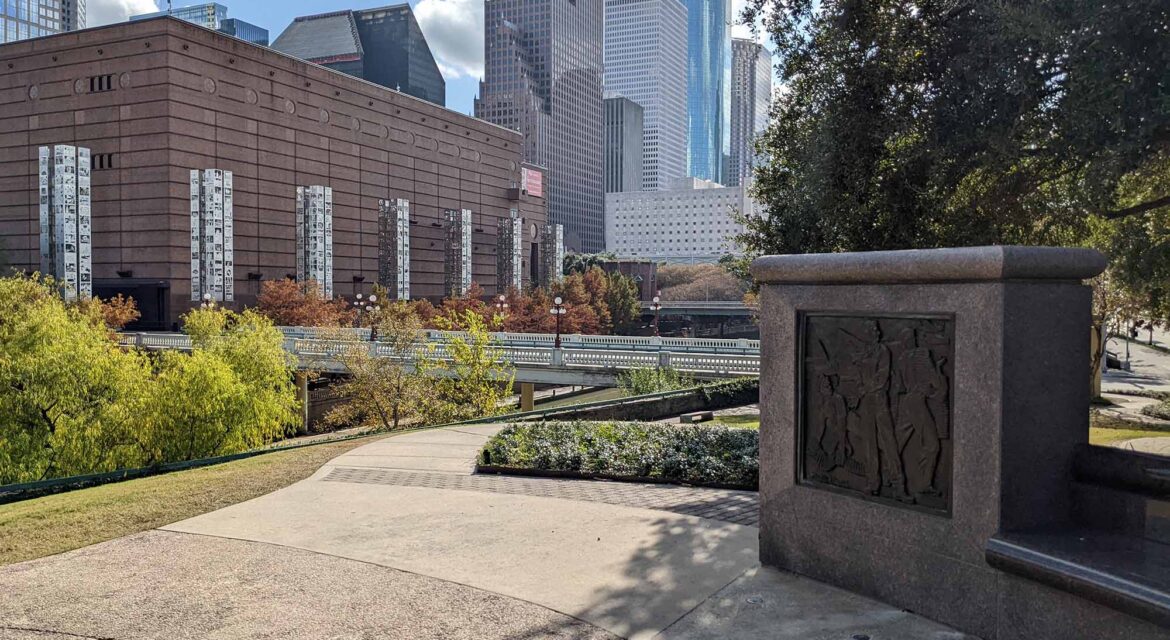 Created to commemorate the 150-year anniversary of the founding of the city of Houston and of the Republic of Texas, Sesquicentennial Park is connected to the history and culture of the region in a profound manner. Located in downtown Houston, Texas, the park features numerous monuments that have cultivated experiences for audiences in ways that have made the entire space an essential element of the modern community.
Created to commemorate the 150-year anniversary of the founding of the city of Houston and of the Republic of Texas, Sesquicentennial Park is connected to the history and culture of the region in a profound manner. Located in downtown Houston, Texas, the park features numerous monuments that have cultivated experiences for audiences in ways that have made the entire space an essential element of the modern community.

Engagement and Experiences
 Plans for Sesquicentennial Park were first unveiled in 1986, honoring the founding of the Texas Republic in that year as well as the founding of the city of Houston the year after. The multi-level park was completed in 1989, although a second phase was not finalized until 1998. These phases saw the creation of multiple monuments and features that are connected to the history and culture of the community, creating engagement and experiences that attract audiences of all types.
Plans for Sesquicentennial Park were first unveiled in 1986, honoring the founding of the Texas Republic in that year as well as the founding of the city of Houston the year after. The multi-level park was completed in 1989, although a second phase was not finalized until 1998. These phases saw the creation of multiple monuments and features that are connected to the history and culture of the community, creating engagement and experiences that attract audiences of all types.
The Common is one of the most prominent features of Sesquicentennial Park, hosting a variety of outdoor events on an annual basis. The 1.25-acre semi-circular lawn provides plenty of room for gatherings that range from events to private parties to concerts. These activities attract a very different type of audience than the permanent features of the park, which have cultivated engagement on a very different level.
Baker Common includes a statue of James A. Baker III, as well as plaques commemorating his family’s contributions to the city. Nearby is the George Bush Monument, which features an eight-foot-tall sculpture of Bush in front of a semicircular wall. Four bas-reliefs that depict various stages of his life decorate the wall which overlooks the park, allowing audiences to experience the space in a variety of ways.
Seven 70-ft-tall pillars define the “Seven Wonders” piece. Each column highlight Houston’s history through a variety of themes including agriculture, energy, manufacturing, medicine, philanthropy, and transportation. These pillars feature individual children’s drawings that have been engraved into the steel columns that define the sculpture.
Offering an ideal spot to view Houston’s downtown buildings in the midst of walking paths and countless places to relax, these elements highlight how Sesquicentennial Park has become something much more than an urban greenspace. All of these features have cultivated different experiences for both residents and visitors, showcasing what it can mean for a vision of engagement to define a space in a way that connects with the hearts and minds of audiences of all eras.

Monuments as a Means of Transformation
 Cities and communities of all types have anniversaries that could transform spaces like Sesquicentennial Park has done for Houston. The many monuments and features of Sesquicentennial Park have compelled this transformation to cultivate profound engagement and experiences, highlighting what it can mean when stakeholders commit to a vision for a space and community.
Cities and communities of all types have anniversaries that could transform spaces like Sesquicentennial Park has done for Houston. The many monuments and features of Sesquicentennial Park have compelled this transformation to cultivate profound engagement and experiences, highlighting what it can mean when stakeholders commit to a vision for a space and community.

